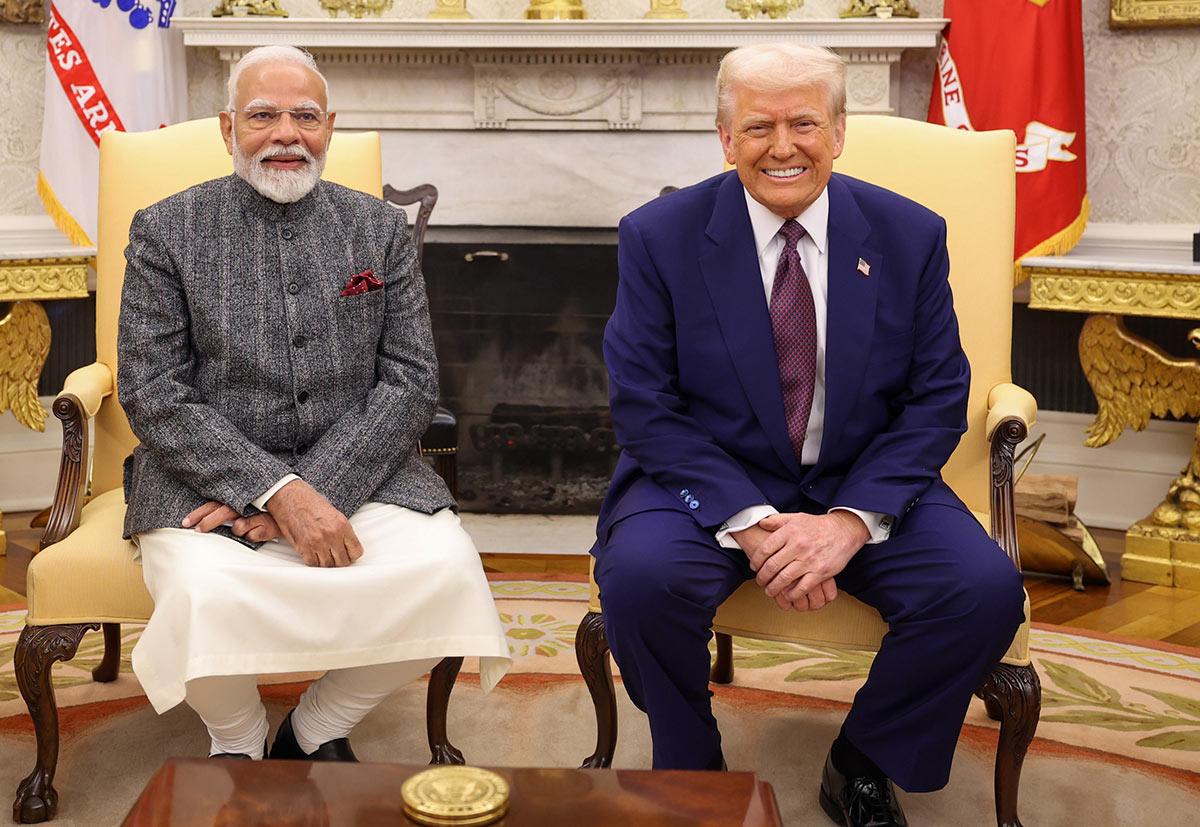

By K Raveendran
The Indo-US joint declaration presents a striking imbalance, appearing more as a dictated statement than a mutually crafted agreement. The document is overwhelmingly skewed in favour of the United States, particularly in the domain of defence procurement, where it reads less like a diplomatic understanding and more like a sales pitch for American military hardware. While broader themes of cooperation are vaguely touched upon, they remain rhetorical flourishes rather than concrete commitments, exposing the disparity in negotiating leverage between the two nations. It is also significant that the joint statement has coincided with Trump’s retaliatory tariff, with India included.
Defence cooperation has long been a critical aspect of Indo-US relations, but this declaration reduces it to a transactional exchange that primarily benefits the US military-industrial complex. While cooperation in defence technology is framed as a strategic necessity, the reality is that India remains heavily reliant on foreign imports, and the US stands to profit immensely from this dependency. The terms and conditions of the defence agreements are often obscured by diplomatic language, but the underlying reality remains the same: India is poised to spend billions on American weaponry while achieving little in terms of technology transfer or self-reliance. This is particularly problematic given India’s long-standing ambition of bolstering indigenous defence production under initiatives like ‘Make in India.’ Instead of fostering genuine technological collaboration, the Indo-US defence partnership, as outlined in this declaration, reinforces a buyer-seller dynamic where India is expected to absorb American products without reaping long-term strategic benefits.
Beyond defence, trade is positioned as a key pillar of the Indo-US relationship, but even here, the framework appears skewed in Washington’s favour. The declaration heralds the ambitious “Mission 500,” which envisions a bilateral trade volume of $500 billion by 2030. However, it remains unclear how much of this trade will be to India’s advantage. Trade agreements in the past have consistently tilted toward benefiting American industries, with India facing regulatory barriers, tariffs, and restrictions on exports. The structural inequities in the current trade dynamics suggest that, despite the grand rhetoric, the actual benefits for India could be limited.
A closer examination of Indo-US trade relations reveals a pattern where India often makes concessions while the US capitalizes on market access. India has historically faced challenges in exporting goods like pharmaceuticals, textiles, and agricultural products to the US due to stringent regulations, while American corporations enjoy relatively easier entry into the Indian market. The removal of India from the Generalized System of Preferences (GSP) programme under the Trump administration further underscored the fragile nature of the trade relationship, highlighting how trade agreements can be weaponised to extract greater concessions from India. If Mission 500 follows this trajectory, it is likely that American companies will strengthen their foothold in India without ensuring reciprocal benefits for Indian enterprises.
The imbalance in the Indo-US relationship is also reflected in the personal diplomacy between Prime Minister Narendra Modi and President Donald Trump. While the optics of their friendship—exemplified by the ‘Howdy Modi’ and ‘Namaste Trump’ events—were widely publicized, they did not translate into substantial gains for India. The grand displays of camaraderie and mutual admiration may have bolstered Modi’s image on the global stage, but they did little to generate tangible benefits for the Indian economy or its citizens. Instead, these interactions provided Trump with a platform to promote his “America First” agenda, securing defence deals and economic advantages for the US while giving India little more than symbolic gestures in return.
For the average Indian, the Indo-US relationship, as shaped by this declaration, appears distant and disconnected from everyday concerns. While political elites and business circles may find avenues for collaboration, the broader population sees little impact on employment, economic mobility, or technological advancements. If anything, increased defence spending on American imports could divert resources away from crucial sectors such as education, healthcare, and infrastructure. The absence of clear benefits for ordinary Indians raises fundamental questions about the priorities driving India’s foreign policy decisions.
A key concern is whether India’s strategic autonomy is being compromised in its eagerness to deepen ties with the US. While strong bilateral relationships are essential for global diplomacy, they should be built on principles of mutual respect and benefit. The current trajectory suggests that India is making significant commitments without securing corresponding assurances from the US. This is evident not only in defence and trade but also in areas like technology collaboration, where American firms remain reluctant to share critical knowledge with Indian counterparts. If this pattern continues, India risks becoming overly dependent on the US in key sectors, which could limit its ability to chart an independent course in global affairs.
Furthermore, the geopolitical implications of this relationship cannot be ignored. The US sees India as a crucial player in its Indo-Pacific strategy, primarily as a counterbalance to China. While India does have its own strategic interests in countering China’s influence, aligning too closely with the US could constrain its flexibility in dealing with regional complexities. India has traditionally pursued a non-aligned foreign policy, maintaining strategic partnerships with multiple global powers. However, the growing asymmetry in Indo-US relations, as reflected in this declaration, raises concerns about whether India is being subtly drawn into an American-led security framework that may not always align with its long-term interests.
The economic dimension of Indo-US ties is equally critical. While the US remains one of India’s largest trading partners, the terms of engagement must be recalibrated to ensure greater equity. India’s aspirations of becoming a global manufacturing hub and a digital powerhouse require sustained investments, technology transfers, and fair market access. A transactional approach—where India primarily serves as a consumer market for American goods—will not serve its long-term economic objectives. For a truly meaningful partnership, both nations must engage in negotiations that prioritize balanced trade, industrial collaboration, and workforce development. (IPA Service)


